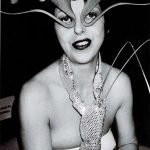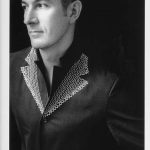1997
GILLES ROSIER
Backed up by a solid experience in haute couture, Gilles Rosier has been able to create designs that combine the quality of hand-fitted tailoring with industrial production. Following early studies in law and at the school of the Paris Chambre Syndicale, he honed his couture skills at Pierre Balmain and Christian Dior, where he worked with Marc Bohan. After a stint with Guy Paulin, he became first assistant to Jean-Paul Gaultier in 1987. In 1992 he designed the first men’s collection for the Léonard label—daring creations which generated much excitement in the press.
That same year, he and Claude Sabbah launched their joint label GR 816, which proved to be very successful among buyers and journalists alike. They came up with an innovative concept, presented in the highly charged atmosphere of a nightclub: garments that achieve an intelligent cultural mix of urban and casual styles.
Mixing jellabas and sweat-shirts, nonchalant tunics and military uniforms reminiscent of the colonial era, the seven GR 816 collections were inspired by memories of travel (to India for Sabbah) or of life abroad, especially in Gabon, where Rosier spent his childhood. Their borrowings from the sports world reinterpreted through hip-hop culture prefigured the vogue for the integration of this dynamic style by the big-name luxury labels.
Starting with his first collection, presented in a solo show at the Carrousel du Louvre in October 1996, Gilles Rosier has consistently demonstrated the excellence of his design work in collections which combine the spirit of haute couture and of ready-to-wear. His collection on the theme of tuxedos conceived as multiple garments of variable geometry entwined around the body shows his masterful ability to materialise an idea in three dimensions. It is also a fine example of his penchant for rethinking men’s clothes and his virtuosic handling of asymmetry.
In 1997 he was awarded the Masters of Linen fellowship under the auspices of ANDAM, which led to the creation of some twenty pieces inspired by the sailor’s suit. In parallel with the development of his own label, Rosier continued to work as a stylist for the Lacoste leisure collection until 1999.
From 1999 to 2002, he took over the creative direction of the House of Kenzo, proving to be a worthy successor to the founder.




